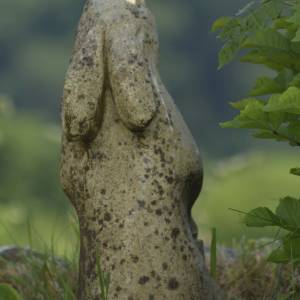Howard and Mary
When I first took to country living - not the idyllic, glossy magazine lifestyle that implies but rather a sort of rough-hewn version carved out of the Lancashire rocks - we moved into a falling down Victorian Villa. Our metropolitan friends assumed we had entered into a collective madness: water poured down into the kitchen forming a small stream that never dried up and the front conservatory had more holes than windows (and there were a lot of windows!) In fact, none of the windows opened anywhere in the house. The balcony, built on the whim of Mr Waring (who we were trying to buy from and who was indeed very wearing) almost claimed our builder (it leaned sideways as he explored it, and he did a near perfect comedy fall gently settling on the ground like a giant leaf. ) Every single room was bruised by an unforgiving brown hue: dark brown doors, brown walls, brown skirting boards, brown architraves. The stairs, and indeed most rooms, had extra carpets so that they were less stairs, more a ski-slope. The toilet was on a pedestal: meaning every visit was like a tiny performance, staged for an audience of trees (and, occasionally, unsuspecting workmen.)
But in the midst of this madness there was also magic. At the top of the stairs, for example, a wardrobe like cupboard (also brown) stood. It opened to a ladder which led into the loft and we, though neither Snotty or I spoke, both made the decision to buy the house at that moment. Climbing up the ladder and spying yet more carpets (along with the bumpiest floor known to mankind) sold the house to us. Totally without thinking it through we made a cash offer over the phone later in the pub as if we were in a very bad episode of a Channel 4 programme: the second time we'd done something that reckless. We were entranced by its potential, by the 3/4 acre of overgrown untamed vegetation around it, and the unspoilt view of the Pennines.
In fact, it was really only semi-rural. And although it looked perfectly lovely, it also sat in a very poor area of the country - rural poverty cheek by jowl with great riches. A famous Man United player lived round the corner, for example. But so too did families who had endured unemployment for three or four generations. Our house sat on the very end of what we laughingly called shoe mile. Rossendale was renowned for two things: mizzle and felting, the mizzle being the prerequisite of the latter. Through the Industrial Revolution, city folk moved to mills neither caring for or loving the country, and set up home. That was how it worked.
Our house (Glenmallan) was originally the Under Manager's house at a long-closed down Foundry and though smaller than the Manager's next door (Palm House, where Mary and Howard lived) it was in possession of a significantly better aspect. Below sat three cottages converted from an old coach house. Together, this was Foundry Vale and the day I moved in I halved the mean age of the residents. If I'd have thought about it, I should have realised that this was a worry: old people get older. Older people need care and help. Aside from Howard and Mary next door: the cottages were occupied left to right Mr and Mrs Speke, Tommy and Agnes and Joe and Betty.
You can read the rest here
- 3
- 0
- Apple iPhone SE
- 1/1250
- f/2.2
- 4mm
- 25

Comments
Sign in or get an account to comment.


